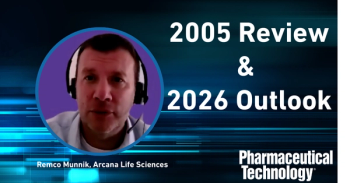
Can IMI Deliver Real Innovation for Europe?
Has Europe's Innovative Medicines Initiative been successful in alleviating concerns regarding the region?s levels of pharmaceutical innovation?
Nathan JessopAs one of Europe’s top performing high-technology sectors, the innovative capacity of the pharmaceutical industry is crucial to its future. In 2011, companies invested an estimated €27.5 billion in R&D in Europe, but despite this high contribution, there is ongoing concern that regional innovation levels are dropping (1). The pharmaceutical industry has placed some of the blame on additional regulatory hurdles that have been introduced, as well as the austerity measures favoured by governments in response to the current economic environment. Other factors intrinsic to the way that R&D is conducted, however, are also believed to have played a part.
There is widespread agreement that the former R&D approach, which was productive in the past, is no longer sufficient to meet expected drug output targets and that there is a need for new thinking. Although they often target the pharmaceutical industry with cost containment measures, European governments have realised that it is not in their interests to cripple companies’ ability to innovate. Between 1995 and 2005, there was a noticeable drift in pharmaceutical research activity towards the United States, which was believed by many companies to offer a more conducive environment for research (1). Europe’s standing as a location for innovative R&D is also challenged by competition from emerging economies. However, Europe is taking measures to boost innovation. One of the region’s most significant efforts is through the Innovative Medicines Initiative (IMI), which recently launched its eighth call for projects and allocated €242.7 million in funding.
The development of the Innovative Medicines Initiative
In late 2002, the G10 Medicines Group brought together top European industry and public health decision makers to develop a strategy for improving Europe’s competitiveness in innovation. One important achievement was the establishment of a system of EU indicators to enable comparisons to be made between the EU and its major competitors. The G10 Medicines Group subsequently published a report on its findings for the European Commission, outlining proposals for concrete action to be taken to boost innovation (2). One of the conclusions from the report was that better cooperation between academic science and industrial science, which frequently occurs in the US, would be beneficial to Europe.
Although not specifically identified in the report from the G10 Medicines Group, the thinking of an effective division of labour between academic and commercial organisations was influential in the creation of the IMI, which was launched in May 2007. IMI’s stated objective was to reinvigorate the European biopharmaceutical sector by creating public–private collaboration where competitors in the pharmaceutical sector work together with counterparts from academic research, as well as with regulatory agencies and patient organisations. To date, IMI has funded projects in the areas of safety and efficacy, knowledge management, and education and training following responses to its call for proposals. The European Commission’s Seventh Framework Programme contributes €1 billion to the IMI research programme and this sum is also matched by member companies of the European Federation of Pharmaceutical Industries and Associations (EFPIA).
Does IMI work?
As a joint undertaking between the European Union (EU) and EFPIA, the IMI has the backing of very powerful institutions, which shows a genuine commitment to revitalising Europe’s research environment. From the outset, however, there have been concerns about whether the IMI could operate in practice. In 2010, The League of European Research Universities (LERU) wrote a letter to the IMI board to highlight what it perceived as deficiencies in the system (3,4). LERU’s key criticism was that the benefits from collaboration were skewed in favour of commercial organisations and that a lack of reassurance was putting off top academic organisations from participating in IMI. Concerns noted were that academics tended to be underfunded for their participation and that IMI’s intellectual property policy was vague and favoured the industry. Academics also complained about the level of bureaucracy when dealing with the management of pharmaceutical companies. Despite this criticism, IMI rejected LERU’s views, stating that 155 universities and 24 SMEs had taken part in projects as part of the first call for proposals and so interest in IMI could not be called into question.
In 2011, the first evaluation of IMI was conducted by a panel of independent experts. The panel based its findings on documents and other published information, as well as interviews with a wide range of IMI stakeholders, participants of IMI-supported research projects and representatives of regulatory bodies, patients organisations and research associations. This was then followed be a performance evaluation, which involved a strengths, weaknesses, opportunities and threats analysis to develop suitable recommendations (5). Overall, the panel appeared to have a positive impression of IMI. Although it was noted that IMI was hampered by bureaucracy in its initial set-up, projects had been successfully launched and were continuing to be developed. Interest in IMI has also been high. The first call for proposals led to 138 expressions of interest received for 18 topics with 1294 participants from 36 countries and interest levels do not seem to have dropped during subsequent calls for proposals. In general, the panel felt that the public–private collaborative model was sound. Nevertheless, flaws were identified that the panel felt were taking too long to address. One of these was the intellectual property issue described by LERU in 2010. Another area was communication, which was felt to be weak on several fronts. There was also concern that not enough was being done to publicise IMI to attract a wider range of stakeholders and to provide interested parties with reasons as to why they should consider participation. There were also worries that mixed messages were emanating from within IMI and that not all parties involved in communication were sufficiently empowered.
Current status
Given that it can take nearly nine years for a drug candidate to advance from early clinical trials to the market, it is not surprising that the panel could only make preliminary conclusions about how productive IMI was, since it is still a very young initiative at this stage. However, IMI is characterised by a continuing high level of activity, which suggests that most stakeholder groups in the healthcare sector believe it can deliver on its promise of boosting European innovation. As of yet, there is no indication as to when an IMI project might result in a new drug, but it would certainly be a high profile method of demonstrating the initiative’s success.At the end of 2012, IMI launched its eighth call for projects. The call included a major focus on antimicrobial resistance, which is seen by the European Commission as an area where progress is urgently needed, given that the problem causes 25000 deaths annually and drains over €1.5 billion in healthcare expenses and productivity losses (6). It is in areas of unmet medical need such as this where IMI will be judged by those outside the pharmaceutical industry. If IMI only serves to enable pharmaceutical companies to remain commercially viable in the EU without also visibly serving social and public health objectives, there could be a backlash due to public funds having been used to such a major extent, and future public–private measures will be jeopardised.
References
1. EFPIA website, “The Pharmaceutical Industry in Figures,” www.efpia.eu, accessed 7 Feb., 2013.
2. European Commission website, “Healthcare Industries: High Level Group on Innovation and Provision of Medicines,” http://ec.europa.eu, accessed 7 Feb., 2013.
3. EurActiv website, “Scientists shun medicines project amid funding row,” www.euractiv.com, accessed 7 Feb., 2013.
4. LERU website, “LERU letter on the Innovative Medicines Initiative (IMI),” www.leru.org, accessed 7 Feb., 2013.
5. European Commission website, “First Interim Evaluation of the Innovative Medicines Initiative,” http://ec.europa.eu, accessed 7 Feb., 2013.
6. European Commission website, “Antimicrobial resistance,” http://ec.europa.eu, accessed 7 Feb., 2013.
Newsletter
Get the essential updates shaping the future of pharma manufacturing and compliance—subscribe today to Pharmaceutical Technology and never miss a breakthrough.




